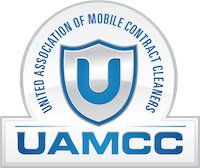Maintaining Safety in Cold Weather is Crucial!
The OSHA Cold Stress Card
Provides Valuable Guidance.
It's Especially Important for All
Pressure Washers & Mobile Cleaning Contractors.
The Key to Cold Weather Safety is Awareness,
Preparation, & Taking Proactive Measures
to Protect Against the Risks of Low Temperatures.
Tips Tailored For Contractor Cleaning IndustryThe OSHA Cold Stress Card
Provides Valuable Guidance.
It's Especially Important for All
Pressure Washers & Mobile Cleaning Contractors.
The Key to Cold Weather Safety is Awareness,
Preparation, & Taking Proactive Measures
to Protect Against the Risks of Low Temperatures.
Preparation
- Layer Clothing: Wear multiple layers to maintain body heat. Start with moisture-wicking fabrics followed by insulating layers and a waterproof outer layer.
- Protective Gear: Use appropriate gear like insulated gloves, hats, and footwear to prevent frostbite or hypothermia.
- Stay Dry: Change out of wet clothing promptly to prevent heat loss and potential health risks.
- Know the Weather: Stay updated on weather forecasts to plan work accordingly. Wind chill can significantly affect how cold it feels outside.
Work Practices:
- Frequent Breaks: Schedule regular breaks in warm areas to give the body time to recover from exposure to the cold.
- Buddy System: Implement a buddy system to monitor each other for signs of cold-related illnesses.
- Equipment Maintenance: Ensure that all machinery and tools are properly maintained and functional, as extreme cold can affect their performance.
Health Awareness:
- Recognize Signs: Train workers to recognize symptoms of cold-related illnesses like hypothermia, frostbite, and trench foot.
- First Aid: Have a well-stocked first-aid kit available and train employees on how to provide basic first aid for cold-related injuries.
- Communication: Encourage open communication among workers to report any concerns about their health or safety in cold conditions.
Emergency Preparedness:
- Emergency Plan: Establish an emergency plan in case someone experiences severe cold-related symptoms.
- Access to Help: Ensure that emergency services can be contacted easily and that workers know how to seek help if needed.
Additional Tips:
- Encourage employees to stay hydrated by drinking plenty of fluids.
- Avoid caffeine and alcohol, as they can cause dehydration and affect body temperature regulation.
Join the Ultimate Pressure Washing Community
'PRESSURE WASHING FRIENDS'
Your Go-To Hub for Expert Tips & Support!
 For More Info Or Updates on Events
For More Info Or Updates on Events
Please Sign Up For The National Cleaning Expo
'PRESSURE WASHING FRIENDS'
Your Go-To Hub for Expert Tips & Support!
Please Sign Up For The National Cleaning Expo
